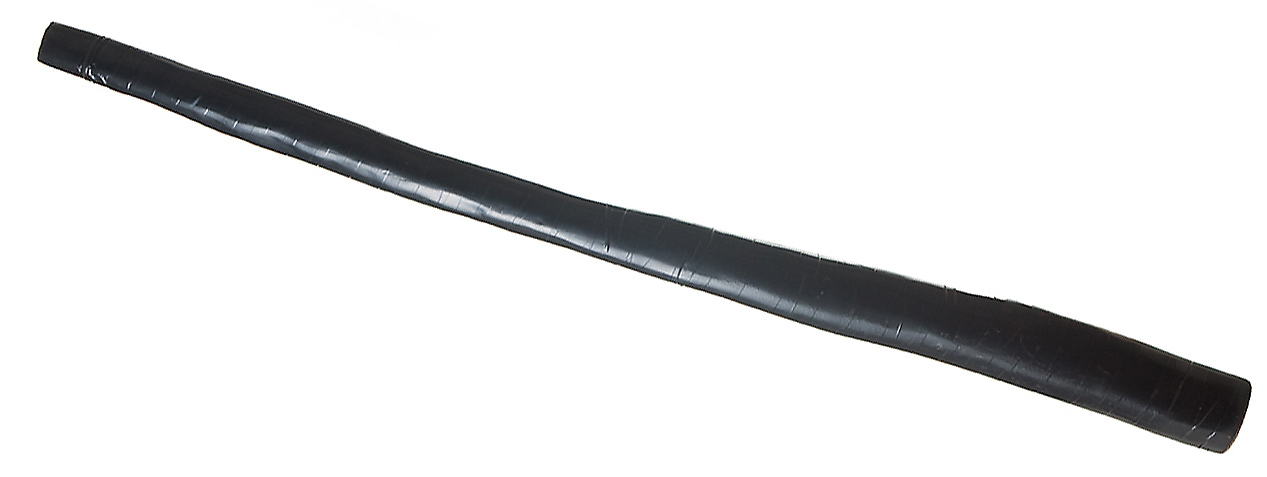Care & Maintenance
1- How to look after your didgeridoo
2- Didgeridoo and heat
3- Didgeridoo and cold
4- Didgeridoo and moisture
5- How to repair your didgeridoo
1- How to look after your didgeridoo
To make your wooden didgeridoo last, it should be treated and handled like any other wooden item of value such as fine furniture or rare violins.
The first thing you need to know about wood is that it is a "alive" despite being dead - it is no longer metabolising or another way of looking at it is that the heart has stopped working and the blood has all dried up. But wood is alive in the sense that it interacts with its environment and expands and shrinks according to the ambient temperature and humidity level of its immediate environment.
It is important to try and minimise exposure to extremes of heat, cold and moisture. These three elements have the potential to cause splits and cracks. Having said that many didgeridoo, particularly those correctly dried, seasoned and sealed, can often handle quite substantial changes in the above conditions- but it is still wise to understand how they can affect a didgerdioo.
Looking after your instrument will ensure it will survive a lifetime of use, though bear in mind that damage to your didgeridoo in the form of splits or cracks are easily repaired with the correct knowhow. There's no such thing as a didgeridoo beyond restoration and a great example of an instrument will always remain so or can be restored to its original structural integrity.
2- Didgeridoo and heat
Avoid exposing your wooden didgeridoo to large changes in temperature. Leaving your didgeridoo unprotected inside your car on a hot day may cause it to crack. You wouldn't leave a guitar in the car on a very hot day, and a didgeridoo likewise would not enjoy the experience. Try to avoid leaning your didgeridoo against a central heating unit or open fireplace, the heat again may cause it to crack.
Even playing the didgeridoo in the sun over a prolonged period may cause it to crack, darkly-coloured instruments are especially vulnerable as they absorb more heat from the sun, you can feel the heat absorbed by a didgeridoo painted all black for example merely by touching the instrument- it will feel hotter than the temperature of the air.
3- Didgeridoo and cold
In very cold areas where the temperature falls below or close to the freezing point, extra care should be taken to protect your instrument. It could be wrapped in a blanket when not in use (but ensure the insides are dry otherwise mould and other pathogens may grow). Some people use custom-made or off-the-shelf didgeridoo bags or carry cases. The better quality ones are padded and provide insulation against a sudden cold snap for instance, and are also useful offcourse when traveling with the didgeridoo.

4- Didgeridoo and moisture
As well as sudden temperature changes, the other thing a wooden didgeridoo doesn't like is a sudden change in moisture content in its wood. If you play your instrument long enough so that saliva drips down the inside of the didgeridoo (there's nothing wrong with this as unsightly as it may seem, all didgeridoo players do itat some time or another), then the didgeridoo is susceptible to cracking and splitting.
Don't forget too that there is moisture in one's breath and this woul d also be absorbed by the wood. Saliva or excessive wetting the inside of the didgeridoo in any way including washing it out with water can cause the wood to expand and potentially crack unless the wood has been treated internally.
Wooden didgeridoos that are sealed on the outside with a strong protectant are more likely to withstand sudden temperature changes, and therefore, contemporary didgeridoos are more hardy and less likely to split than say yidaki made by traditional custodians of the instrument in Arnhem Land.
Most contemporary craftsmen use epoxies, varnishes and other tough protective sealants. Traditional Arnhem Land didgeridoos, on the other hand, usually use PVA glue as a sealant on the finished instrument before painting it. Whatever material is used to coat the raw timber has a protective effect, whether it is beeswax, varnish, PVA glue, or merely a layer of paint or ochre (natural earth pigments).
A layer of duct tape, as in the example below, wrapped around the entire length of your didgeridoo would also protect it greatly. Indeed, many yidaki that are seen in ceremony in Arnhem Land are covered from head to toe in duct tape, mostly to cover small air leaks that might have developed over time, or as a preventative measure to ensure the instrument does not crack. However, this type of finish is not often seen outside of Arnhem Land as it is not considered by many to be visually appealing or representative of “better practice”

There are different options for sealing the bore (inside) of a wooden didgeridoo. Oils are sometimes used . Epoxies ,varnishes and beeswax are popular among contemporary craftsmen or owners of contemporary instruments.
If your didgeridoo is well sealed on the inside, cleaning the bore with water occasionally does not do any harm, whether the didgeridoo is a traditional yidaki or a more modern counterpart. Didgeridoos made from artisan materials such as hemp or other organic matters would need to be cleaned in accordance with the craftsman's recommendation.
Traditional Arnhemland didgeridoos are often left unsealed as players often prefer what is called the dirty/rapsy sound of these didgeridoos. This can make them a bit more susceptible to cracking particularly if they are played for an extended period. Arnhem Land didgeridoos can also benefit from having their bores sealed and light oils such as tung oil have been found to be beneficial as they offer some protection from cracking without affecting too much the cherished gritty, textured acoustics of the yirdaki loved by aficionados.
Epoxies and other hard varnishes tend to brighten the acoustics somewhat and are not recommended for traditional yidaki, unless you don't mind a bright sound. Owners of traditional yidaki have other methods for ensuring the longevity and protection of their instrument. These may include owning a number of instruments so no one instrument is played excessively to the point where the bore may be compromised. A humidifier may be useful, if there is a particular room in which your didgeridoos are kept, a humidifier will ensure that the air never dries out too much and keeps the didgeridoos in a comfortable stable environment.
All the instruments at Spirit Gallery (with the exception of some traditional instruments) are sealed with a resin, epoxy, or varnish .Arnhemland didgeridoos are sometimes oiled for protection and can be done so on request.
5- How to repair your didgeridoo
Should your didgeridoo develop cracks, it is not a difficult matter to repair it. Very fine hair splits that might be seen, unless they are leaking air, might be best left alone. If you want to prevent the appearance of further hairline splits, or the potential of splits developing into cracks that leak air, you may want to seal the bore (inside) as a preventative measure if it is not already done so.
A quick and simple and perhaps temporary fix for any cracks would be to use some basic superglue or beeswax and plug the crack.
A more correct and permanent way would be to fill the cracks with a putty made from combining fine sawdust with PVA glue. Other adhesives can be used , such as epoxies and special glues. An ideal adhesive would be very strong with some flexibility so it doesn't shatter if there is a build-up of tension in the crack it is filling.
A good adhesive would move a little with the wood. Low viscosity is also of benefit as it helps in the penetration into the wood and thus forms stronger bonds in the lines of tension where cracks form. The perfect adhesive to use is one that is stronger than the wood and moves with the wood.
Some fine cracks that are leaking air and seem to be “growing” or re-appear after being repaired are sometimes best dealt with by widening the crack, by cutting thin slivers of wood away using a razor or similar sharp tool or knife and then using the glue sawdust combination
The putty formed should have a regular consistency so make sure you mix it well. It shouldn't be runny either, it should be a putty that you can shape and roughly mould. Once you have pressed some of this putty into the crack, using more than you need, let it dry for a day or two before lightly sanding the repaired area so that excess putty is sanded down to the level of surrounding wood. When done, you can touch up the artwork (if any) and re-seal the instrument with the appropriate varnish
With a little tender love and care and observing the above pointers, whether you own one or 30 didgeridoos your instrument can last a lifetime. Even if an instrument should crack or split or get damaged there are some simple techniques for repairing and restoring your babies to full glory.





